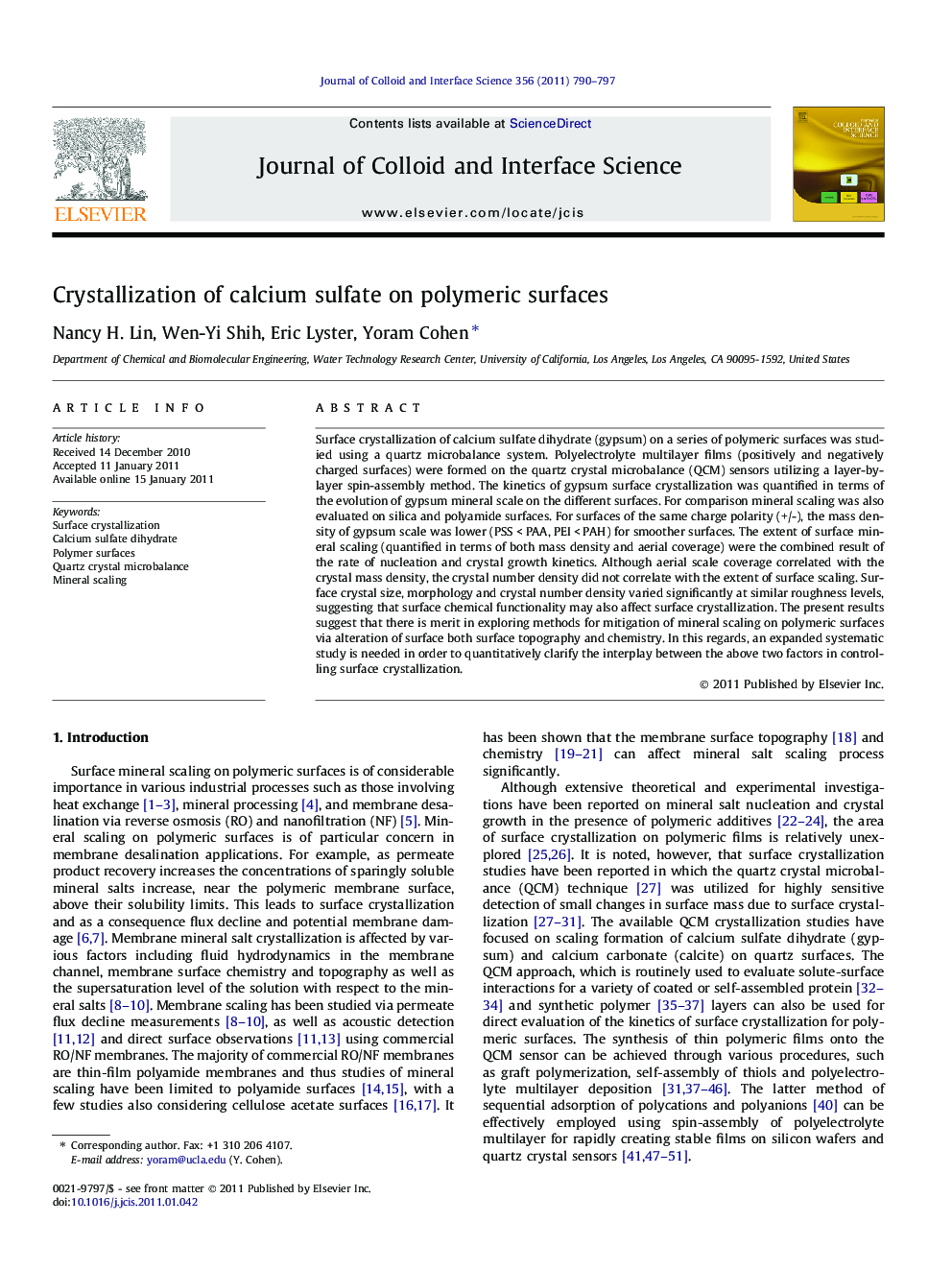| Article ID | Journal | Published Year | Pages | File Type |
|---|---|---|---|---|
| 608836 | Journal of Colloid and Interface Science | 2011 | 8 Pages |
Surface crystallization of calcium sulfate dihydrate (gypsum) on a series of polymeric surfaces was studied using a quartz microbalance system. Polyelectrolyte multilayer films (positively and negatively charged surfaces) were formed on the quartz crystal microbalance (QCM) sensors utilizing a layer-by-layer spin-assembly method. The kinetics of gypsum surface crystallization was quantified in terms of the evolution of gypsum mineral scale on the different surfaces. For comparison mineral scaling was also evaluated on silica and polyamide surfaces. For surfaces of the same charge polarity (+/-), the mass density of gypsum scale was lower (PSS < PAA, PEI < PAH) for smoother surfaces. The extent of surface mineral scaling (quantified in terms of both mass density and aerial coverage) were the combined result of the rate of nucleation and crystal growth kinetics. Although aerial scale coverage correlated with the crystal mass density, the crystal number density did not correlate with the extent of surface scaling. Surface crystal size, morphology and crystal number density varied significantly at similar roughness levels, suggesting that surface chemical functionality may also affect surface crystallization. The present results suggest that there is merit in exploring methods for mitigation of mineral scaling on polymeric surfaces via alteration of surface both surface topography and chemistry. In this regards, an expanded systematic study is needed in order to quantitatively clarify the interplay between the above two factors in controlling surface crystallization.
Graphical abstractThe kinetics of gypsum surface crystallization on polymeric surfaces was studied using a quartz crystal microbalance demonstrating the importance of both surface topography and chemistry on crystal nucleation and growth.Figure optionsDownload full-size imageDownload high-quality image (100 K)Download as PowerPoint slideResearch highlights► Gypsum crystallization on polymeric surfaces was evaluated via QCM measurements. ► Gypsum mass density, for same surfaces polarity, was lower for smoother surfaces. ► Surface chemical functionality impacts surface crystallization.
